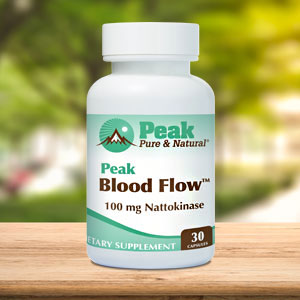Get Easy Health Digest™ in your inbox and don’t miss a thing when you subscribe today. Plus, get the free bonus report, Mother Nature’s Tips, Tricks and Remedies for Cholesterol, Blood Pressure & Blood Sugar as my way of saying welcome to the community!
Is your immune system ready to protect you during stroke?

Every year 800,000 Americans suffer from a stroke, which can cause everything from brain swelling and tissue death to seizures, bladder problems and long-term depression.
And while there are treatments available to help, including a blood clot-busting enzyme that’s delivered through injection and a surgical procedure that also removes clots, that doesn’t mean they can benefit everyone.
That’s because those treatments have to be administered very early after stroke in order to be effective. And many people can’t get to a hospital fast enough.
But there is good news.
According to research by a team of neurologists and immunologists from the University of Pittsburgh, a well-functioning immune system holds the best-kept secrets for maximum protection during a stroke…
The role of immune response in stroke
Your immune system plays a vital role in stroke. The second a blood clot wedges itself in a blood vessel, your brain sends out an SOS signal calling for help from your immune system to clear out cellular debris, limit damage to your brain and kick-start repair.
The problem is, the way your immune system functions is extremely diverse and complex. And while some immune cells can be very beneficial, others can be detrimental to a damaged brain.
Now, those Pittsburgh researchers have discovered exactly which cells are the good guys: a unique subset of white blood cells that confer fast-acting and lasting protection against ischemic stroke.
Identified as CD8+ regulatory-like T cells (CD8+TRLs), these “first responders” swoop in during a stroke, attracted by a unique “homing” signal released by dying brain cells.
Within 24 hours after stroke onset, they reach the brain to do their work…
“The beauty of CD8+TRLs is in their fast response. They confer very potent protection to the brain, which can last a long time,” said co-corresponding author Xiaoming Hu, M.D., Ph.D., associate professor of neurology at Pitt and a U.S. Department of Veterans Affairs (VA) investigator. “Most importantly, these cells are easily accessible because they circulate in the blood before they enter the injured brain.”
Because of this, the team is now focusing on creating shelf-stable and ready-to-use CD8+TRLs or a cocktail of neuro-protective signaling molecules released by those cells to help the hundreds of thousands of patients who are ineligible for other treatments.
“Despite the efforts of thousands of people devoting their careers to finding treatments that could benefit stroke patients, therapy options are minimal,” said co-senior author Jun Chen, M.D., Ph.D. “I have been working in this field for more than 30 years, and this is the first time I feel that I am seeing the light at the end of the tunnel, promising future clinical translation that will benefit patients.”
Stroke prevention is the best medicine
Of course, as with anything, there’s no telling how long these breakthrough therapies may take to develop.
But there are steps you can take now….
Leverage the power of immune system modulators that promote a balanced immune response — since as the research showed “… different types of immune cells may play distinct beneficial or detrimental roles in a damaged brain.”
Thymoquinone is an immune system modulator found in the oil from the Nigella sativa plant. It helps balance immune response so it’s not overblown or, conversely, does not underperform. That way, the immune cells that carry out beneficial roles in the event of stroke are ready to do so.
Improve your body’s response to infection. A study review of the health records of over 190,000 stroke patients found that the risk of suffering an ischemic stroke was more than five times higher during the week following a hospital visit for a UTI, as compared to during the year before the infection.
The risk for bleeding within the brain itself following a hemorrhagic stroke was also higher following a urinary tract infection, as compared with septicemia or respiratory infections.
COVID-19 taught us that infection and inflammation can increase stroke risk. In addition to its ability to douse inflammation, research has shown that “…vitamin D3 appears to stimulate the type I interferon signalling system in the body — a key part of the immune system that provides a first-line of defense against bacteria and viruses.”
Ensure healthy circulation from head to toe. If you have no need to take a blood thinner, you can naturally support blood flow.
Passive stretching is the artery “workout” that improves blood flow. Research showed in just 12 weeks it increased blood flow and dilation and decreased arterial stiffness.
To help blood flow through healthy arteries, consider natto, the enzyme discovered in a traditional Japanese dish that offers fibrinolytic effects (keeps fibrin from going overboard to form clots).
Editor’s note: What do you really know about stroke? The truth is, only 10% of stroke survivors recover almost completely, and all doctors can offer is what to do after a stroke occurs. That’s unacceptable considering 80% of strokes are preventable! Click here to discover how to escape The Stroke Syndrome: 5 Signs it’s Stalking You — Plus the Hidden Causes and Preventive Measures You’ve Never Heard About!
Sources:
Fast-acting immune cells provide powerful protection against stroke — ScienceDaily
Common Complications After Stroke: What Are They and What Can Be Done? — Saebo















